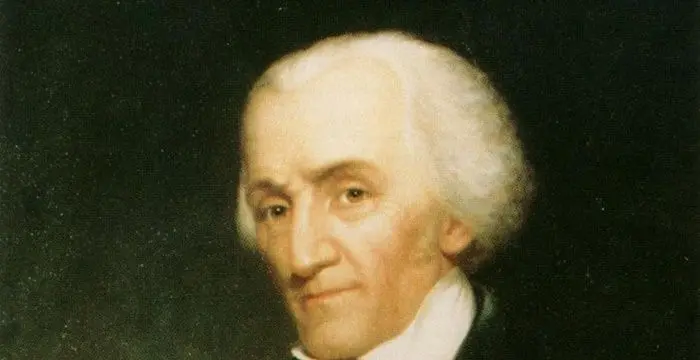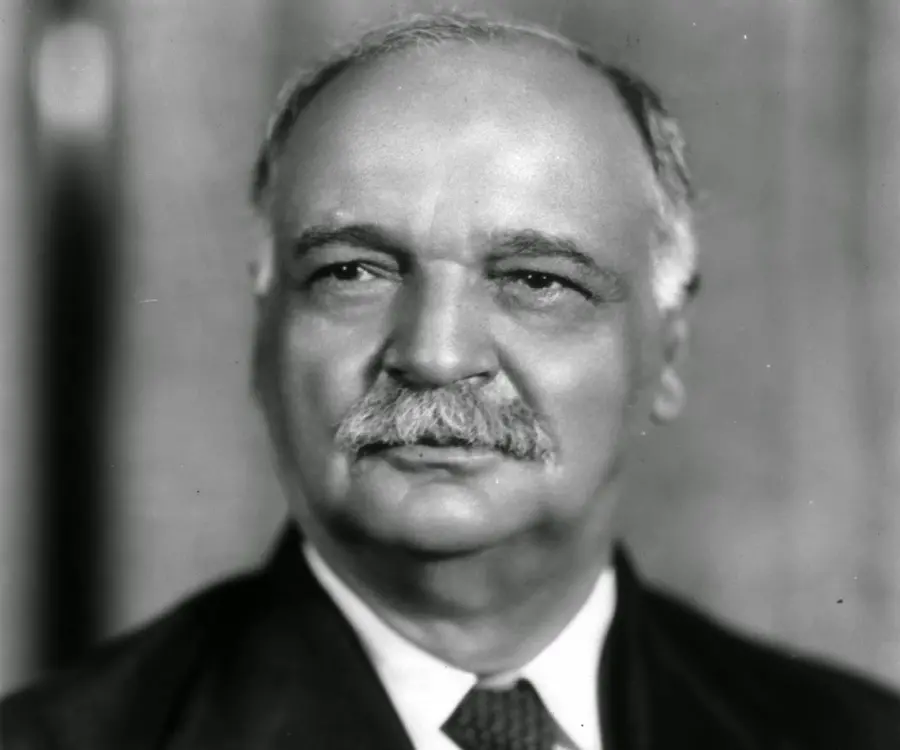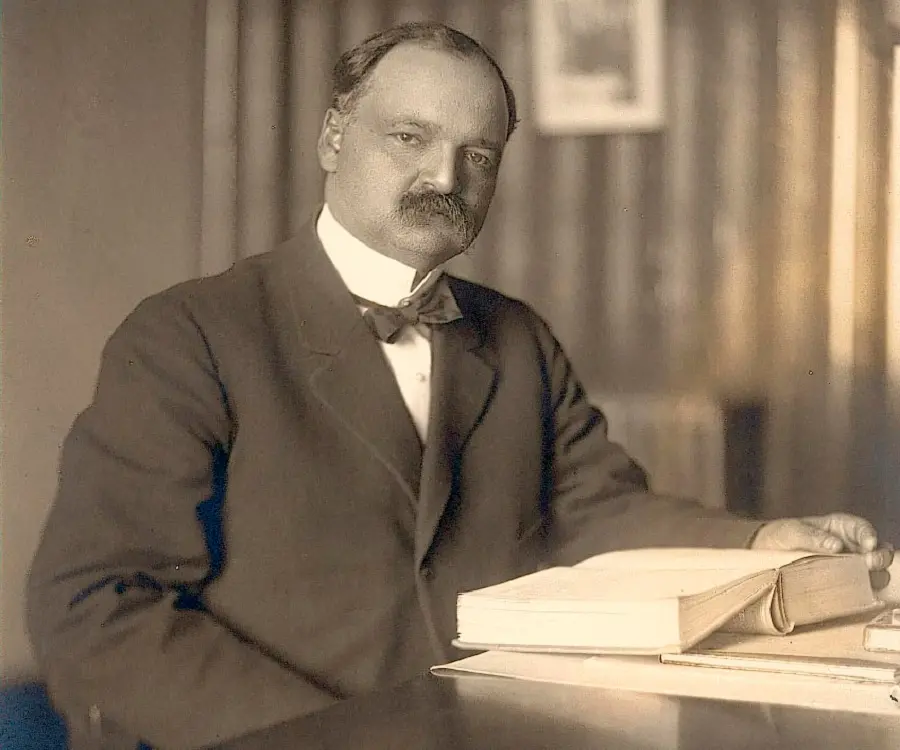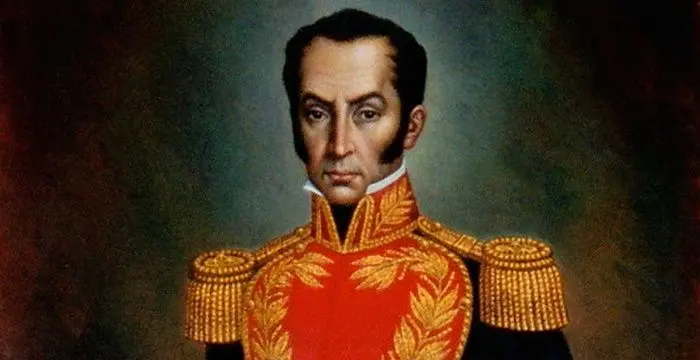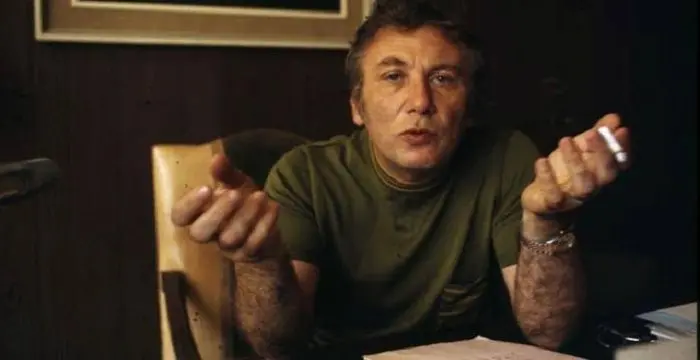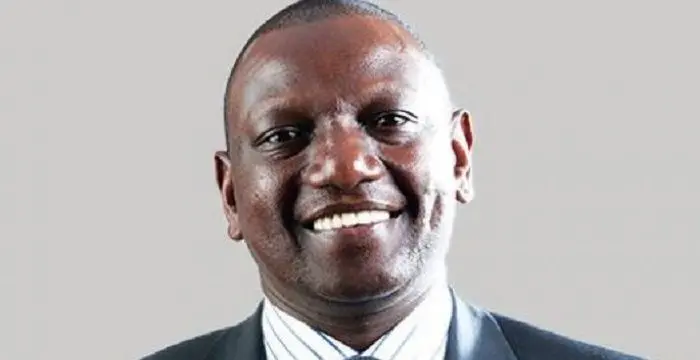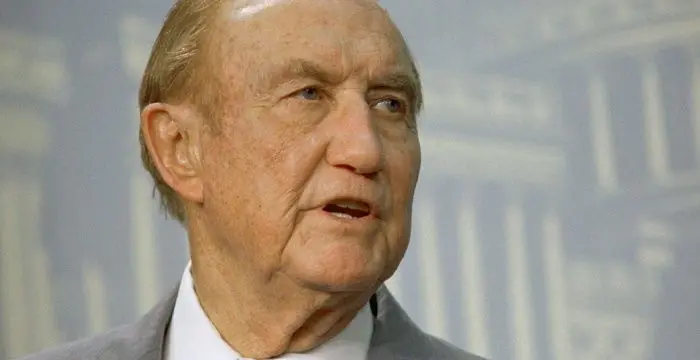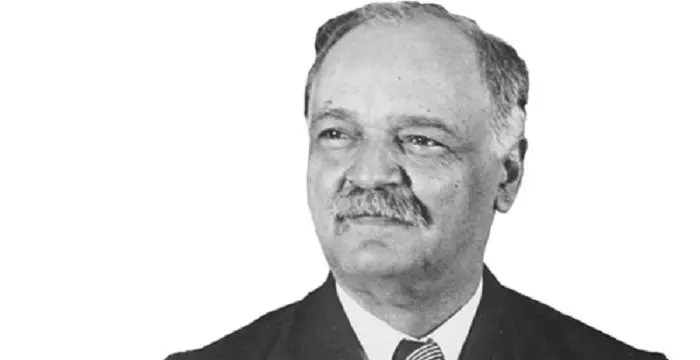
Charles Curtis - Former Vice President of the United States, Life Achievements and Life
Charles Curtis's Personal Details
Charles Curtis was an American politician who served as the 31st Vice President of the United States
| Information | Detail |
|---|---|
| Birthday | January 25, 1860 |
| Died on | February 8, 1936 |
| Nationality | American |
| Famous | Native Americans, Republicans, Leaders, Political Leaders, Former Vice President of the United States |
| Ideologies | Republicans |
| Spouses | Annie Baird |
| Siblings | Theresa Permelia Curtis |
| Childrens | Henry King Curtis, Leona Virginia Curtis, Permelia Jeannette Curtis |
| Universities |
|
| Birth Place | Topeka |
| Political Ideology | Republican |
| Gender | Male |
| Father | Orren Curtis |
| Mother | Ellen Papin |
| Sun Sign | Aquarius |
| Born in | Topeka |
| Famous as | Former Vice President of the United States |
| Died at Age | 76 |
// Famous Former Vice President of the United States
Elbridge Gerry
Elbridge Gerry was an American statesman who went on to become fifth Vice President of the United States. To gain in depth knowledge about his profile, childhood, life & timeline, go through his biography.
Dan Quayle
Dan Quayle was the 44th Vice President of the United States who served under President George H.W. Bush. Explore this article to learn more about his childhood, life, works, achievements and timeline.
John C. Breckinridge
John C. Breckinridge was an American statesman who served as the 14th and youngest-ever Vice President of the United States. This biography of John C. Breckinridge provides detailed information about his childhood
Charles Curtis's photo
Who is Charles Curtis?
Charles Curtis was an American politician who served as the 31st Vice President of the United States. He was the first Native American to hold either of the two highest offices in the United States government’s executive branch. Curtis started his career in law before taking a plunge into politics. In his five decades of political career, he held important positions, as a Member of the United States House of Representatives, as a United States Senator, as President pro tempore of US Senate, as Senate Majority Leader and finally as the Vice President of the United States. While serving as a member of the House and later as a Senate Majority Leader, Curtis was instrumental in managing legislation and accomplishing Republican national goals. Despite having years of experience in politics, due to Curtis’ cold relations with President Hoover, the former rarely played a role in the cabinet meetings as Vice President. His advice on legislative and administrative matters was hardly ever sought by the government. During his term, the only time he came into prominence was for a social squabble over protocol involving his half-sister and daughter of Theodore Roosevelt. Curtis was succeeded by John Nance Garner in 1932. He spent his later life practicing law.
// Famous Republicans
Simon Bolivar
Simón Bolívar was a Venezuelan military leader who was instrumental in independence of several Latin American countries from the Spanish rule. This biography profiles his childhood, life, achievements and timeline.
Nizar Qabbani
Nizar Qabbani was a poet, and is one among the most honoured men in the Arab Literary world. This biography provides detailed information about his childhood, career, profile and timeline.
William Ruto
William Ruto is a politician who hails from Kenya and is the first Deputy President of the Republic of Kenya. This biography provides detailed information about his childhood, Profile, career and timeline
Childhood & Early Life
Charles Curtis was born on January 25, 1860 in Topeka, Kansas Territory to Orren Arms Curtis and Ellen Gonville Pappan. Young Curtis’ had nearly half American-Indian ancestry. While his father had English, Welsh and Scot lineage, his mother belonged to French, Kaw, Osage and Potawatomi.
Following his mother’s death in 1863, Curtis’ father remarried twice. He had a half-sister, Theresa Permelia ‘Dolly’ Cutis. At the breakout of the American Civil War, his father was imprisoned. Curtis came under the guidance of his grandparents who helped him gain possession of his mother's land in North Topeka.
As a boy, Curtis started racing horses. He became a successful horse jockey, excelling at riding prairie horse .For the same, he became popularly known as Indian Charley.
Academically, Curtis completed his early education from Topeka High School. Later, he completed his law studies while working part time.
Career
In 1881, Curtis was admitted to the bar. From 1885 to 1889, he practiced as a prosecuting attorney of Shawnee County, Kansas. While working as attorney, Curtis enforced the state prohibition on liquor, thus closing down all saloons.
Since an early age, Curtis showed a passion for politics. In 1892, he finally entered politics, after being elected as a Republican to the House of the Representative of the 53rd Congress. He was re-elected for six continuous terms.
As a member of the House, Curtis directed much of his attention on the Committee of Indian Affairs. He drafted the Curtis Act of 1898, which reversed numerous treaty rights by allocating land and restructuring provisions to Five Civilized Tribes of Oklahoma. He abolished tribal courts and governments.
Curtis aimed at assimilating the Indian tribal into the main society and providing them with basic rights such as education. He also encouraged them to accept individual citizenship and European-American culture.
Curtis re-enrolled with the Kaw tribe and in 1902, drafted the Kaw Allotment Act under which he disbanded Kaw nation as a legal entity. The disbandment led to the re-allocation of Kaw land to federal government, which in turn assigned land to individual tribal members. Curtis too benefitted from the act as he belonged to this tribe.
His service in the House lasted until January 1907. Immediately after resigning from the House, Curtis was to fill up for the short, unexpired term of Kansas Senator Joseph R Burton in the United States Senate. No sooner, he was chosen for a full senatorial term that lasted until 1913.
Curtis benefitted the most from the 17th Amendment that insisted on direct election of Senators, as he was elected by popular vote for the seat of the Senate. He served in the position for three terms commencing from March 4, 1915. In 1920, he was re-elected for another six years until 1926. Curtis was re-elected for yet another six year term until 1931. However, a Vice Presidential appointment cut short his tenure as a Senator, in 1929.
In his senatorial term, Curtis served as the President of the pro tempore of the Senate as well as Chairman of the Committee on Expenditures in the Department of the Interior, of the Committee on Indian Depredations, and of the Committee on Coast Defenses, as well as of the Republican Conference.
As a Senator, Curtis long harboured the ambition for a presidential post. In 1924, he denied the vice-presidential candidacy due to his wife’s illness. An opportunity yet again arose in 1928, following President Coolidge’s denial to re-run for the Presidential post.
During the 1928 Presidential elections, former Commerce Secretary Herbert Hoover was selected for the Republican ticket. Curtis ran under Hoover for the Vice President’S post. Though Herbert’s appointment earned the wrath of farmers who opposed him ever since his service as Food Czar during World War I, he nevertheless won by landslide victory.
Following the victory, Curtis resigned from his Senatorial post in March 1929, to take up the office of the Vice President. His appointment created history as he became the only native Kansan and only Indian to hold the post. Furthermore, he became the first American of Indian origin to reach such a high office and the first to take the oath of office on Bible. He yet again became the first to appoint a female, rather than the traditional male, as his secretary
Though Hoover and Curtis jointly operated, there was little in common between the two. Curtis never served as an inside player for Hoover who in turn never adhered to the former’s advice. Contradictorily, Curtis spent much of his vice-presidency time, presiding over the Senate and casting tie-breaking votes.
Immediately after coming to power, the Hoover-Curtis government faced the Great Depression. Curtis recommended the five-day work week proposal as a work-sharing solution to unemployment.
The Stock Market Crash of 1929 slipped the nation into its worst economic depression phase. Instead of acting on ways to come out of the tough economic times, Curtis became embarrassingly embroiled over a conflict between his half-sister, Dolly and Theodore Roosevelt’s daughter, Alice Roosevelt Longworth.
The Great Depression followed by the Stock Market Crash did little to safeguard the Republican ticket which seemed doomed for the 1932 presidential election. Though Curtis himself preferred opting out from his Vice Presidential post for a seat as a Senator, his sister’s insistence led him to be re-nominated on the Hoover ticket.
Standing against Franklin Roosevelt and John Nance Garner at a time when the Great Depression seemed at its deepest, Hoover-Curtis collaboration seemed to be a weak ticket since the start. Consequently, they heavily lost the Presidential elections by 57% to 40% to Roosevelt. His term as the Vice President terminated on March 4, 1933.
The landslide defeat marked the end of Curtis’ political career as well, as he retired from politics. Instead, he resumed his legal career in Washington, DC. In 1935, he served as a chairman of the Republican senatorial campaign committee.
Major Works
Curtis most important contribution came in as a Senator, a position he served from 1915 until 1929. In the position, he aimed at transfusing the tribal society within the main society thus providing the tribal people with equal rights to education. He also played an instrumental role in drafting the Kaw Allotment Act that that disbanded Kaw nation as a legal entity. He very well managed legislative issues and accomplished Republican national goals.
Personal Life & Legacy
Curtis married Annie Elizabeth Baird on November 27, 1884. The couple was blessed with three children, Permelia Jeannette Curtis, Henry "Harry" King Curtis and Leona Virginia Curtis.
In 1924, Anne Elizabeth Baird breathed her last. Curtis remained a widower all through. His half-sister, Theresa Permelia "Dolly" Curtis acted as his hostess for social events.
He was at his half-sister, Dolly’s house when he died on February 8, 1936 due to heart attack. As he had desired, his body was flown to Kansas where he was interred next to his wife at the Topeka Cemetery.
His house in Topeka, Kansas has been listed on the National Register of Historic Places and designated as a state historic site.
Trivia
This Vice President of United States was popularly called ‘Indian Charley’ or ‘Our Charley’ by the people.
// Famous Leaders
Edi Rama
Edi Rama is the current Prime Minister of Albania. Check out this biography to know about his childhood, life, achievements, works & timeline.
Tecumseh
Tecumseh was a Native American leader of the Shawnee clan. This biography profiles his childhood, life and timeline.
Khalifa bin Zayed Al Nahyan
Sheikh Khalifa bin Zayed Al Nahyan is the current President of the United Arab Emirates (UAE). Check out this biography to know about his birthday, childhood, family life, achievements and fun facts about him.
Charles Curtis biography timelines
- // 25th Jan 1860Charles Curtis was born on January 25, 1860 in Topeka, Kansas Territory to Orren Arms Curtis and Ellen Gonville Pappan. Young Curtis’ had nearly half American-Indian ancestry. While his father had English, Welsh and Scot lineage, his mother belonged to French, Kaw, Osage and Potawatomi.
- // 1863Following his mother’s death in 1863, Curtis’ father remarried twice. He had a half-sister, Theresa Permelia ‘Dolly’ Cutis. At the breakout of the American Civil War, his father was imprisoned. Curtis came under the guidance of his grandparents who helped him gain possession of his mother's land in North Topeka.
- // 27th Nov 1884Curtis married Annie Elizabeth Baird on November 27, 1884. The couple was blessed with three children, Permelia Jeannette Curtis, Henry "Harry" King Curtis and Leona Virginia Curtis.
- // 1892Since an early age, Curtis showed a passion for politics. In 1892, he finally entered politics, after being elected as a Republican to the House of the Representative of the 53rd Congress. He was re-elected for six continuous terms.
- // 1898As a member of the House, Curtis directed much of his attention on the Committee of Indian Affairs. He drafted the Curtis Act of 1898, which reversed numerous treaty rights by allocating land and restructuring provisions to Five Civilized Tribes of Oklahoma. He abolished tribal courts and governments.
- // 1902Curtis re-enrolled with the Kaw tribe and in 1902, drafted the Kaw Allotment Act under which he disbanded Kaw nation as a legal entity. The disbandment led to the re-allocation of Kaw land to federal government, which in turn assigned land to individual tribal members. Curtis too benefitted from the act as he belonged to this tribe.
- // Jan 1907 To 1913His service in the House lasted until January 1907. Immediately after resigning from the House, Curtis was to fill up for the short, unexpired term of Kansas Senator Joseph R Burton in the United States Senate. No sooner, he was chosen for a full senatorial term that lasted until 1913.
- // 1915 To 1929Curtis most important contribution came in as a Senator, a position he served from 1915 until 1929. In the position, he aimed at transfusing the tribal society within the main society thus providing the tribal people with equal rights to education. He also played an instrumental role in drafting the Kaw Allotment Act that that disbanded Kaw nation as a legal entity. He very well managed legislative issues and accomplished Republican national goals.
- // 1924 To 1928As a Senator, Curtis long harboured the ambition for a presidential post. In 1924, he denied the vice-presidential candidacy due to his wife’s illness. An opportunity yet again arose in 1928, following President Coolidge’s denial to re-run for the Presidential post.
- // 1924In 1924, Anne Elizabeth Baird breathed her last. Curtis remained a widower all through. His half-sister, Theresa Permelia "Dolly" Curtis acted as his hostess for social events.
- // 1928During the 1928 Presidential elections, former Commerce Secretary Herbert Hoover was selected for the Republican ticket. Curtis ran under Hoover for the Vice President’S post. Though Herbert’s appointment earned the wrath of farmers who opposed him ever since his service as Food Czar during World War I, he nevertheless won by landslide victory.
- // 1929The Stock Market Crash of 1929 slipped the nation into its worst economic depression phase. Instead of acting on ways to come out of the tough economic times, Curtis became embarrassingly embroiled over a conflict between his half-sister, Dolly and Theodore Roosevelt’s daughter, Alice Roosevelt Longworth.
- // Mar 1929Following the victory, Curtis resigned from his Senatorial post in March 1929, to take up the office of the Vice President. His appointment created history as he became the only native Kansan and only Indian to hold the post. Furthermore, he became the first American of Indian origin to reach such a high office and the first to take the oath of office on Bible. He yet again became the first to appoint a female, rather than the traditional male, as his secretary
- // 1932The Great Depression followed by the Stock Market Crash did little to safeguard the Republican ticket which seemed doomed for the 1932 presidential election. Though Curtis himself preferred opting out from his Vice Presidential post for a seat as a Senator, his sister’s insistence led him to be re-nominated on the Hoover ticket.
- // 4th Mar 1933Standing against Franklin Roosevelt and John Nance Garner at a time when the Great Depression seemed at its deepest, Hoover-Curtis collaboration seemed to be a weak ticket since the start. Consequently, they heavily lost the Presidential elections by 57% to 40% to Roosevelt. His term as the Vice President terminated on March 4, 1933.
- // 1935The landslide defeat marked the end of Curtis’ political career as well, as he retired from politics. Instead, he resumed his legal career in Washington, DC. In 1935, he served as a chairman of the Republican senatorial campaign committee.
- // 8th Feb 1936He was at his half-sister, Dolly’s house when he died on February 8, 1936 due to heart attack. As he had desired, his body was flown to Kansas where he was interred next to his wife at the Topeka Cemetery.
// Famous Political Leaders
Edi Rama
Edi Rama is the current Prime Minister of Albania. Check out this biography to know about his childhood, life, achievements, works & timeline.
Khalifa bin Zayed Al Nahyan
Sheikh Khalifa bin Zayed Al Nahyan is the current President of the United Arab Emirates (UAE). Check out this biography to know about his birthday, childhood, family life, achievements and fun facts about him.
Leo Varadkar
Cam Leo Varadkar is the current Taoiseach—the Prime Minister—of the Republic of Ireland. Check out this biography to know about his childhood, family life, achievements and other facts about his life.
Strom Thurmond
Strom Thurmond was an American politician, who represented the state of South Carolina in the United States senate for 48 years.
Solon
Solon was an Athenian lawmaker, poet and politician. He is considered as one of the ‘Seven Wise Men’ in Greek culture. This biography provides detailed information about his childhood, life, career, works, achievements and timeline.
Mohammed bin Salman
Mohammed bin Salman is the Crown Prince of Saudi Arabia and the heir apparent to the throne. Check out this biography to know about his childhood, family life, achievements and other facts about him.
Charles Curtis's FAQ
What is Charles Curtis birthday?
Charles Curtis was born at 1860-01-25
When was Charles Curtis died?
Charles Curtis was died at 1936-02-08
Where was Charles Curtis died?
Charles Curtis was died in Washington, D.C.
Which age was Charles Curtis died?
Charles Curtis was died at age 76
Where is Charles Curtis's birth place?
Charles Curtis was born in Topeka
What is Charles Curtis nationalities?
Charles Curtis's nationalities is American
What is Charles Curtis ideologies?
Charles Curtis's ideologies is Republicans
Who is Charles Curtis spouses?
Charles Curtis's spouses is Annie Baird
Who is Charles Curtis siblings?
Charles Curtis's siblings is Theresa Permelia Curtis
Who is Charles Curtis childrens?
Charles Curtis's childrens is Henry King Curtis, Leona Virginia Curtis, Permelia Jeannette Curtis
What was Charles Curtis universities?
Charles Curtis studied at Topeka High School
What is Charles Curtis's political ideology?
Charles Curtis's political ideology is Republican
Who is Charles Curtis's father?
Charles Curtis's father is Orren Curtis
Who is Charles Curtis's mother?
Charles Curtis's mother is Ellen Papin
What is Charles Curtis's sun sign?
Charles Curtis is Aquarius
How famous is Charles Curtis?
Charles Curtis is famouse as Former Vice President of the United States
